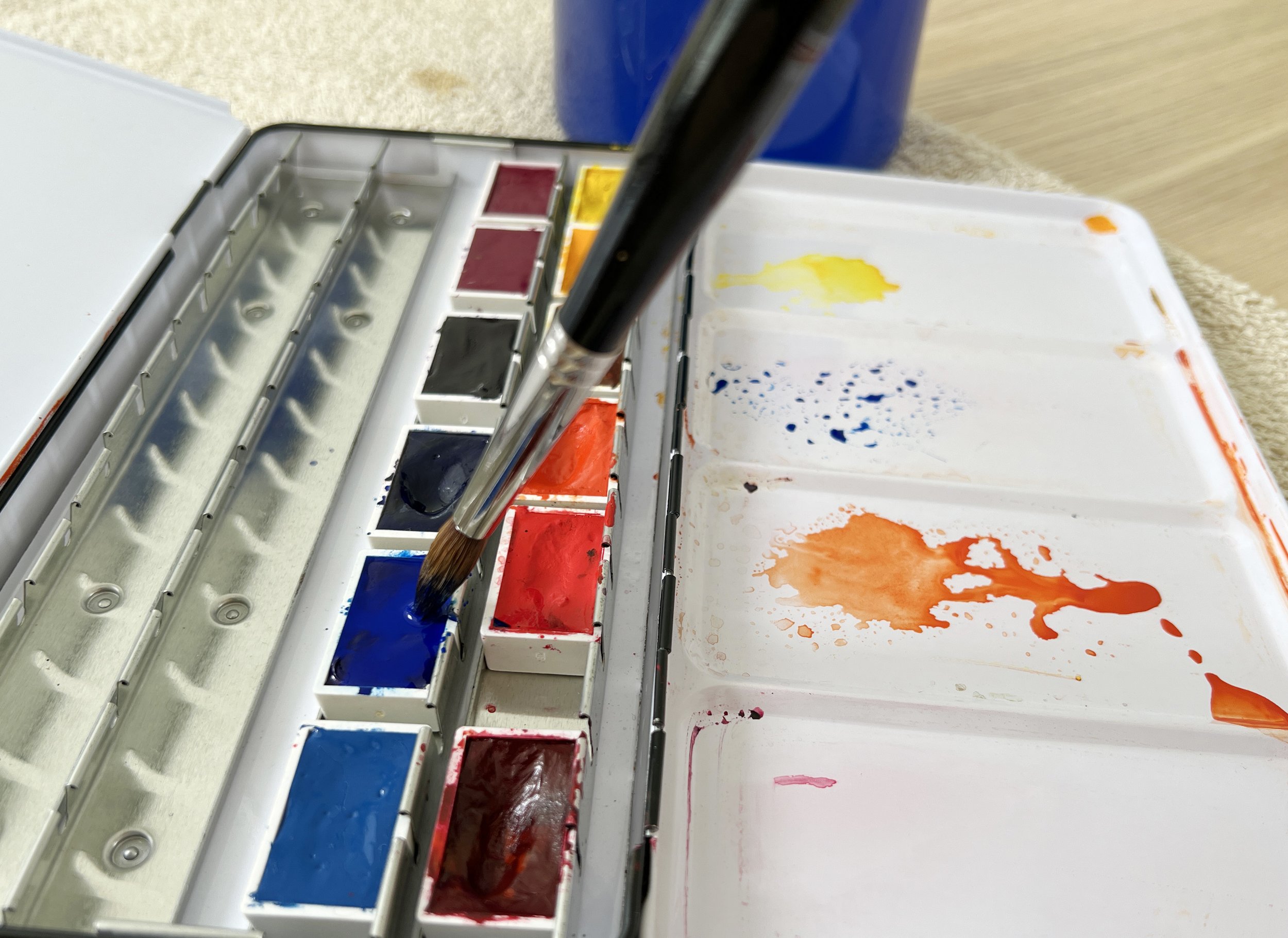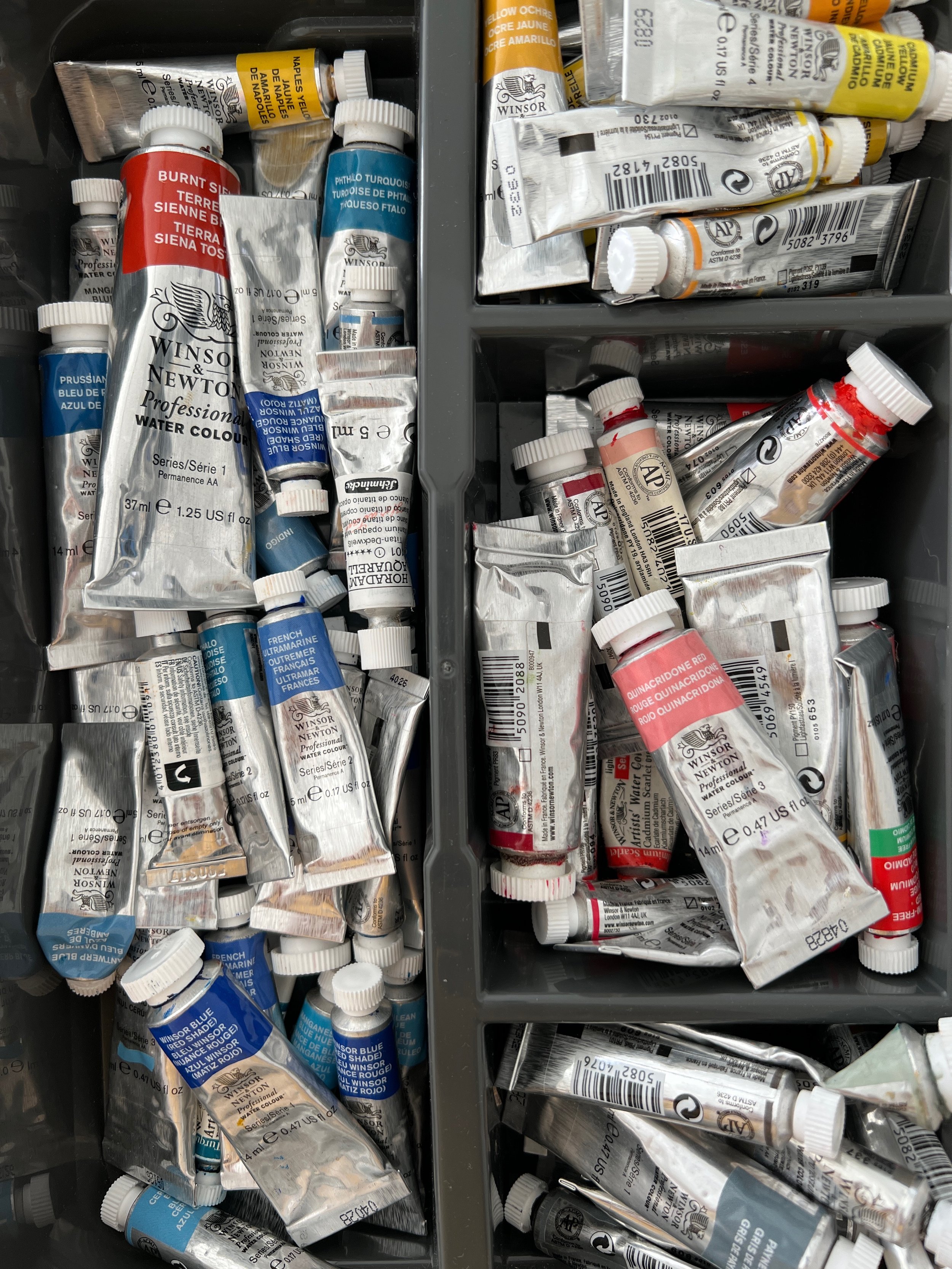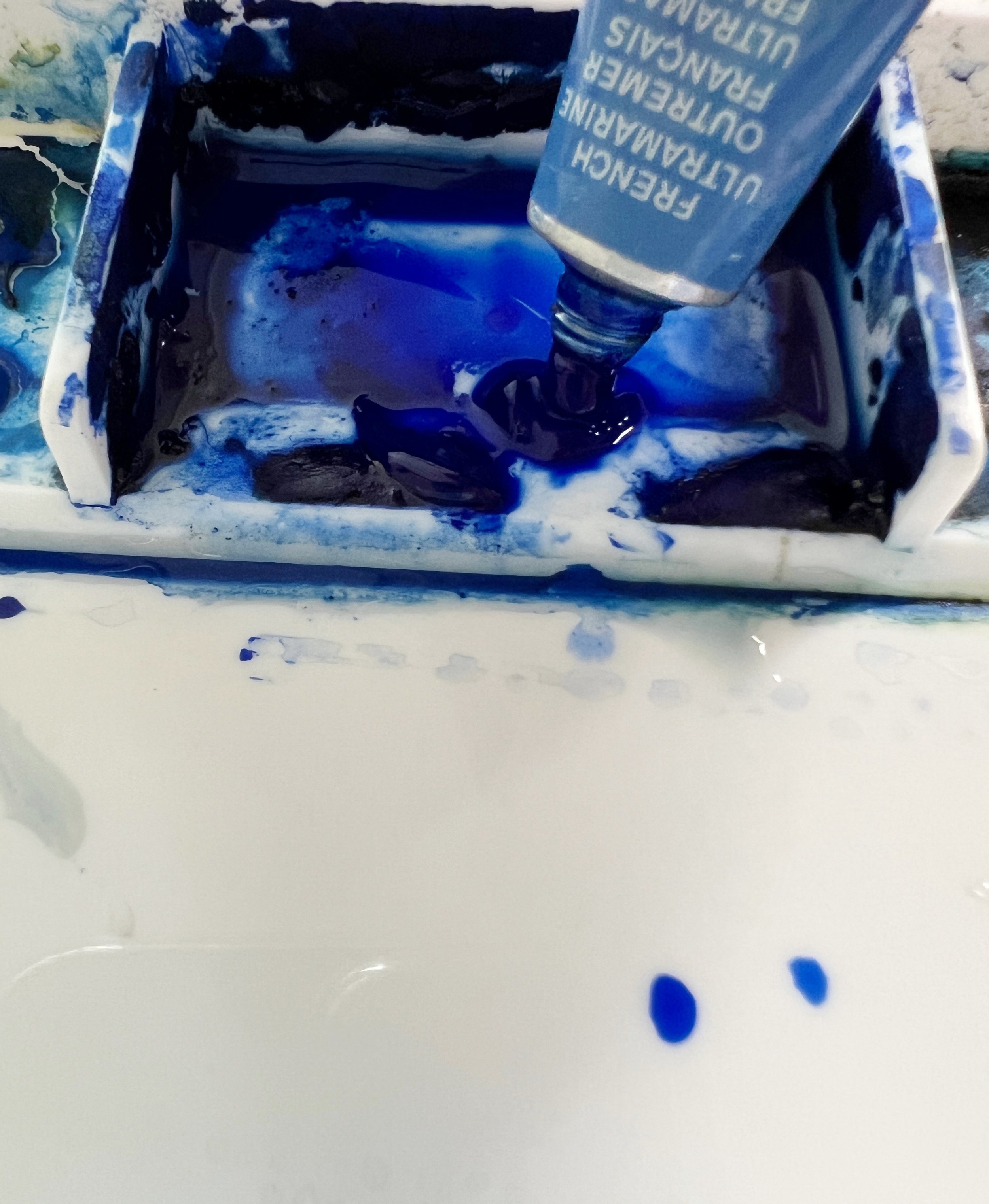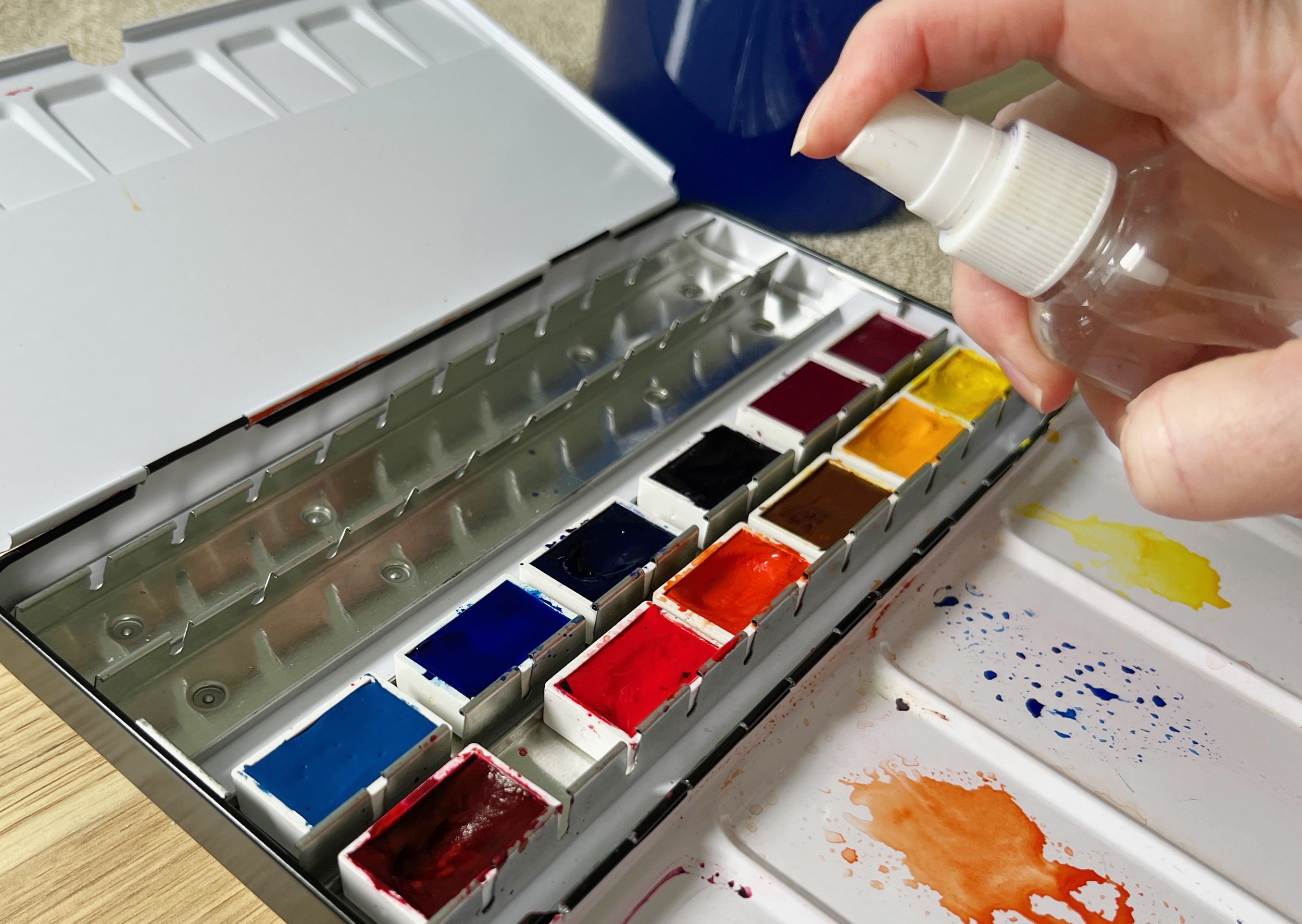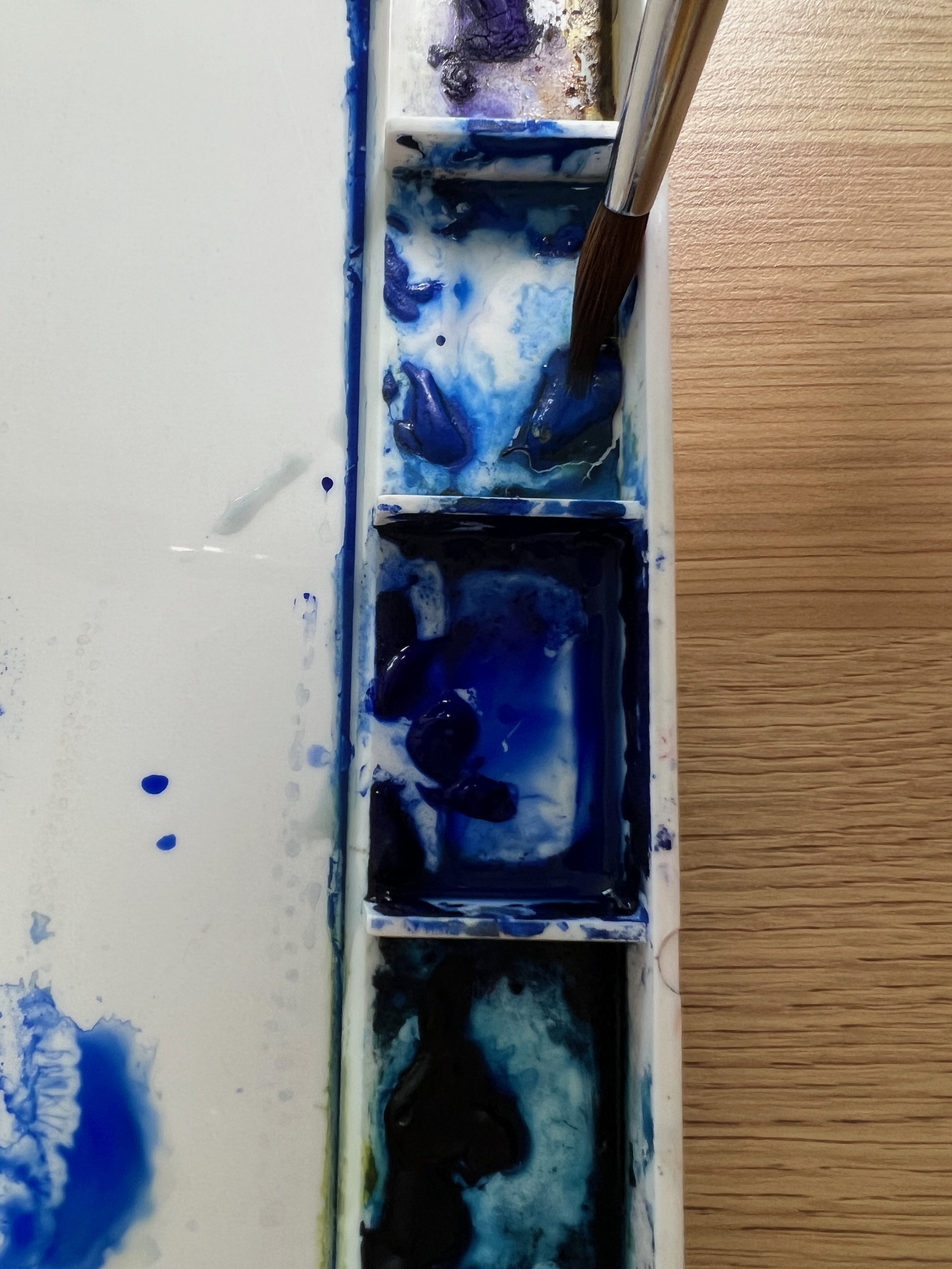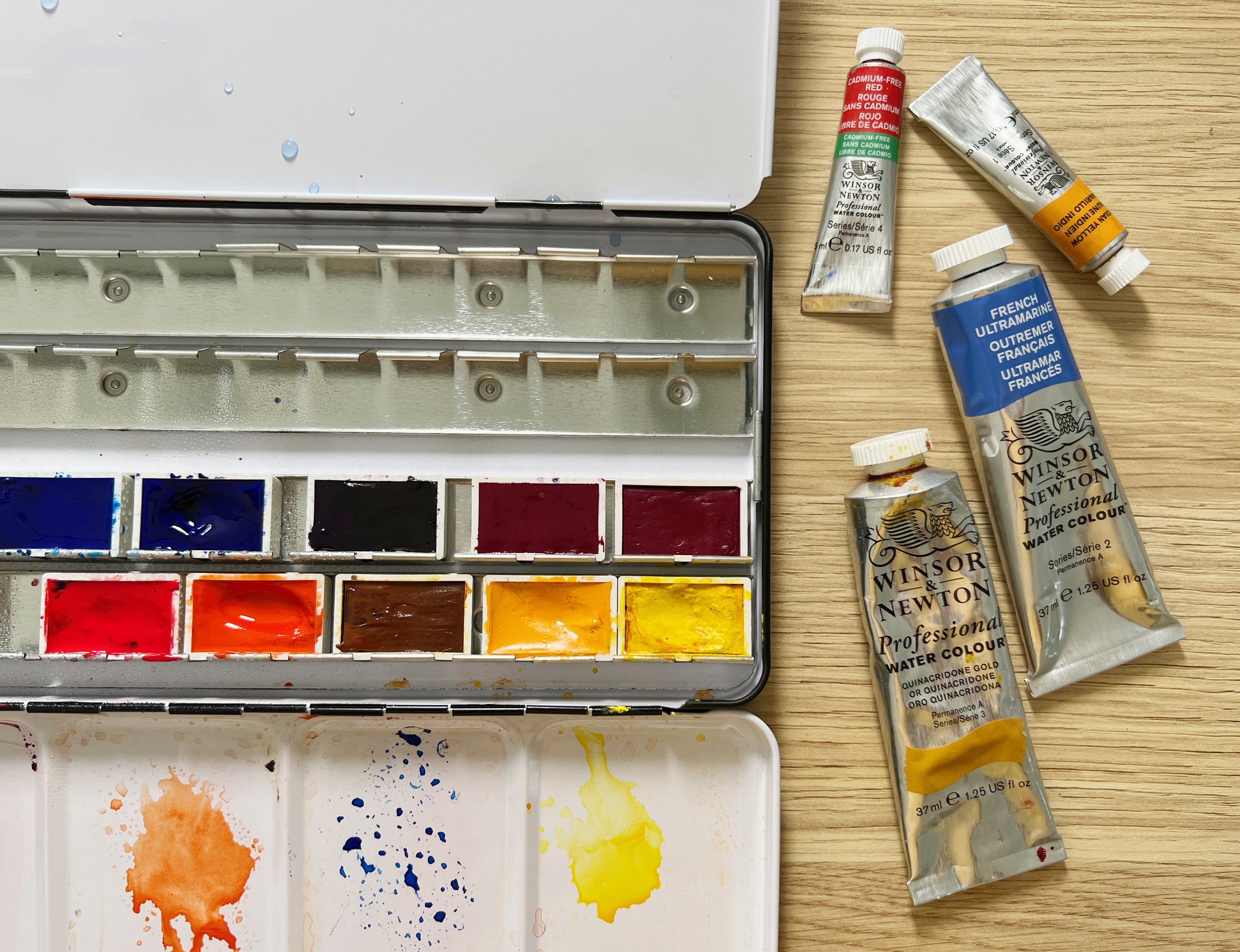Pan Paints versus Tube Paints. What’s the Difference?
Pan paints in a box
People often ask, “Louise, what watercolour paints do you prefer to paint with, tubes or pans?”
My answer: Tubes!
I hear you asking, “Why do you prefer tubes over pans?”
Well, I like to paint with tubes mainly because I prefer to use freshly squeezed paint when I mix. I find it easier to mix with paint that is wet, rather than paint that has hardened on my palette.
Tube paints aren’t suitable for everybody though. Read on to find out more about the differences between tube watercolour paints and pan watercolour paints.
Packaging
One major difference between pan paints and tube paints is their form of packaging. Pan paints come pre-dried in a plastic or metal container where they can be easily stored, while tube paints are packaged in small containers with a twist-off cap that contains wet paint.
Pans come in two sizes, a full pan and a half pan. They are convenient because they can be inserted into an empty paintbox or purchased as a set, making them great for artists on the go.
Tube paints are available in various sizes from small to large. I like to buy the colours I use most often in the largest size.
A disadvantage of tube paints is that sometimes the lids are difficult to open because the paint has dried around the rim.
Tubes offer more flexibility in terms of the amount of paint you use, as you can squeeze out just the right amount needed for your project.
When using watercolour from a tube, I like to squeeze a small amount of paint onto my palette. Then I dilute the paint with water to my desired consistency.
Squirting out fresh tube paint
Pan paints need to be rehydrated with water before use. A light spray of water about 5 minutes before you start painting is usually all that is needed to soften them.
Tube paints also need to be refreshed with water when they have dried on the palette.
Refreshing pan paint with water
A major advantage of using watercolour from a tube is that it provides a concentrated amount of colour, resulting in instantly vibrant hues. However, a disadvantage is that depending on the brand of paint, when it dries on your palette, it may not "revive" with water quite the same way as watercolour from a pan.
Paint hardened on the palette
Can you use Tube Paint and Pan Paint on the Same Painting?
Yes you can! You can even mix a tube paint with a pan paint. How exciting!
Use of Brushes with Pan and Tube Paints
If you do large paintings, then tube paint might be a better option for you because you can squeeze some fresh paint out onto a large palette and load a large brush with it. Pans are harder to use if you are using a large brush.
While using pan paints, one disadvantage is that you may need to dig at the paint with your brush to pick it up, which can be harsh on your brushes.
Tube paints, on the other hand, are gentler on your brushes since you can squeeze out the wet pigment and pick it up easily with your brush.
Pan paints and tube paints
Pan paints and tube paints both offer unique advantages depending on the project you’re working on. Consider your painting style when choosing which type of paint to use.
If you intend on painting plein air, pan paints are more appropriate than tube paints. They are portable and ready to use in their own little tray.
Whether you choose to work with pans or tubes, understanding the differences between them is key to creating the desired result for your artwork.
Ultimately, there is no wrong or right answer when deciding between pan and tube paints. Both offer a variety of options for achieving the perfect painting results!
So, don’t be ‘painthearted’ when it comes to deciding whether to use pans or tubes. Why not try both and see what you prefer?
Let me know in the comments if you are ‘Team Tube’ or ‘Team Pan’?
